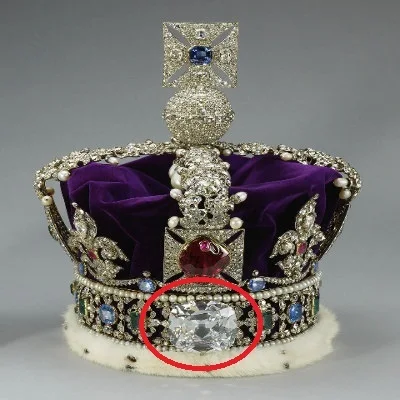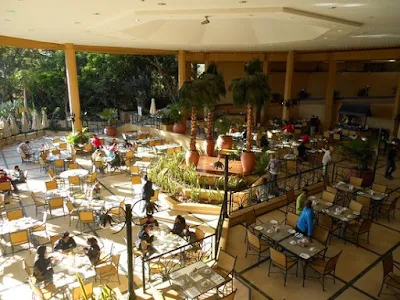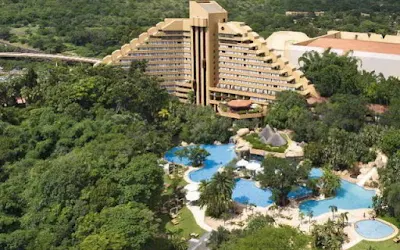Dharavi is a locality in Mumbai, Maharashtra, India, considered to be one of Asia's largest slums. Dharavi has an area of just over 2.1 square kilometers (0.81 sq mi; 520 acres) and a population of about 1,000,000. With a population density of over 277,136/km2 (717,780/sq mi), Dharavi is one of the most densely populated areas in the world.
The Dharavi slum was founded in 1884 during the British colonial era, and grew in part because of an expulsion of factories and residents from the peninsular city centre by the colonial government and from the migration of poor rural Indians into urban Mumbai. For this reason, Dharavi is currently a highly diverse settlement religiously and ethnically.
Dharavi has an active informal economy in which numerous household enterprises employ many of the slum residents leather, textiles and pottery products are among the goods made inside Dharavi. The total annual turnover has been estimated at over US$1 billion. Dharavi has suffered from many epidemics and other disasters, including a widespread plague in 1896 which killed over half of the population of Mumbai. Though large sums of money have been borrowed by the Indian government in the guise of improving sanitation in Dharavi, none of these have materialized into any development on the ground.
The Dharavi slum was founded in 1884 during the British colonial era, and grew in part because of an expulsion of factories and residents from the peninsular city centre by the colonial government and from the migration of poor rural Indians into urban Mumbai. For this reason, Dharavi is currently a highly diverse settlement religiously and ethnically.
Dharavi has an active informal economy in which numerous household enterprises employ many of the slum residents leather, textiles and pottery products are among the goods made inside Dharavi. The total annual turnover has been estimated at over US$1 billion. Dharavi has suffered from many epidemics and other disasters, including a widespread plague in 1896 which killed over half of the population of Mumbai. Though large sums of money have been borrowed by the Indian government in the guise of improving sanitation in Dharavi, none of these have materialized into any development on the ground.
In the 18th century, Dharavi was an island with a predominantly mangrove swamp. It was a sparsely populated village before the late 19th century, inhabited by Koli fishermen. Dharavi was then referred to as the village of Koliwada.
In the 1850s, after decades of urban growth under East India Company and British Raj, the city's population reached half a million. The urban area then covered mostly the southern extension of Mumbai peninsula, the population density was over 10 times higher than London at that time. The most polluting industries were tanneries, and the first tannery moved from peninsular Mumbai into Dharavi in 1887. People who worked with leather, typically a profession of lowest Hindu castes and of Muslim Indians, moved into Dharavi. Other early settlers included the Kumbars, a large Gujarati community of potters. The colonial government granted them a 99-year land-lease in 1895. Rural migrants looking for jobs poured into Mumbai, and its population soared past 1 million. Other artisans, like the embroidery workers from Uttar Pradesh, started the ready-made garments trade. These industries created jobs, labor moved in, but there was no government effort to plan or invest in any infrastructure in or near Dharavi. The living quarters and small scale factories grew haphazardly, without provision for sanitation, drains, safe drinking water, roads or other basic services. But some ethnic, caste and religious communities that have settled in Dharavi at that time helped build the settlement of Dharavi, by forming organizations and political parties, building school and temples, constructing homes and factories. Dharavi's first mosque, Badi Masjid, started in 1887 and the oldest Hindu temple, Ganesh Mandir, was built in 1913.
At India's independence from colonial rule in 1947, Dharavi had grown to be the largest slum in Mumbai and all of India. It still had a few empty spaces, which continued to serve as waste-dumping grounds for operators across the city. Mumbai, meanwhile, continued to grow as a city. Soon Dharavi was surrounded by the city, and became a key hub for informal economy. Starting from the 1950s, proposals for Dharavi redevelopment plans periodically came out, but most of these plans failed because of lack of financial banking and/or political support. Dharavi's Co-operative Housing Society was formed in the 1960s to uplift the lives of thousands of slum dwellers by the initiative of Shri. M.V. Duraiswamy, a well-known social worker and congress leader of that region. The society promoted 338 flats and 97 shops and was named as Dr. Baliga Nagar. By the late 20th century, Dharavi occupied about 175 hectares (432 acres), with an astounding population density of more than 2,900 people per hectare (1,200/acre).
A Dubai-based firm, SecLink Group, has planned to redevelop the slum into a completely new area. On setting up of the SPV, the private firm will have to bring in the equity of Rs 400 crore, while the state government will invest another Rs 100 crore. The company planning to do it is also building infrastructure and affordable housing projects in Singapore and Dubai. Following the empowered committee's nod, the senior state officials said that an MoU will soon be executed between the state government, and the Dharavi Redevelopment Project Authority (DRPA) and the company. With an almost estimated cost of over Rs 26,000 crore, the Dharavi makeover project is the biggest brownfield redevelopment project in India. To make the redevelopment more economically viable, the state government's plan is involving transforming the region into a hub for commercial and business activity. Dharavi is close to the Bandra Kurla Complex, which is India's richest business district and one of the richest in Asia.
At India's independence from colonial rule in 1947, Dharavi had grown to be the largest slum in Mumbai and all of India. It still had a few empty spaces, which continued to serve as waste-dumping grounds for operators across the city. Mumbai, meanwhile, continued to grow as a city. Soon Dharavi was surrounded by the city, and became a key hub for informal economy. Starting from the 1950s, proposals for Dharavi redevelopment plans periodically came out, but most of these plans failed because of lack of financial banking and/or political support. Dharavi's Co-operative Housing Society was formed in the 1960s to uplift the lives of thousands of slum dwellers by the initiative of Shri. M.V. Duraiswamy, a well-known social worker and congress leader of that region. The society promoted 338 flats and 97 shops and was named as Dr. Baliga Nagar. By the late 20th century, Dharavi occupied about 175 hectares (432 acres), with an astounding population density of more than 2,900 people per hectare (1,200/acre).
A Dubai-based firm, SecLink Group, has planned to redevelop the slum into a completely new area. On setting up of the SPV, the private firm will have to bring in the equity of Rs 400 crore, while the state government will invest another Rs 100 crore. The company planning to do it is also building infrastructure and affordable housing projects in Singapore and Dubai. Following the empowered committee's nod, the senior state officials said that an MoU will soon be executed between the state government, and the Dharavi Redevelopment Project Authority (DRPA) and the company. With an almost estimated cost of over Rs 26,000 crore, the Dharavi makeover project is the biggest brownfield redevelopment project in India. To make the redevelopment more economically viable, the state government's plan is involving transforming the region into a hub for commercial and business activity. Dharavi is close to the Bandra Kurla Complex, which is India's richest business district and one of the richest in Asia.
The total current population of Dharavi slum is unknown, and estimates vary widely. Some sources suggest it is 300,000 to about a million.
With Dharavi spread over 200 hectares (500 acres), it is also estimated
to have a population density of 869,565 people per square mile. With a
literacy rate of 69%, Dharavi is the most literate slum in India. About 30% of the population of Dharavi is Muslim, compared to 13% average population of Muslims in India. The Christian population is estimated to be about 6%,
while the rest are predominantly Hindus (63%), with some Buddhists and
other minority religions. Among the Hindus, about 20% work on animal
skin production, tanneries and leather goods. Other Hindus specialise in
pottery work, textile goods manufacturing, retail and trade,
distilleries and other caste professions – all of these as small-scale
household operations. The slum residents are from all over India, people
who migrated from rural regions of many different states.
The slum has numerous mosques, temples and churches to serve people of
Islam, Hindu and Christian faiths; with Badi Masjid, a mosque, as the
oldest religious structure in Dharavi.
Dharavi is a large area situated between Mumbai's two main suburban railway lines, the Western and Central Railways. To the west of Dharavi are Mahim and Bandra, and to the north lies the Mithi River. The Mithi River empties into the Arabian Sea through the Mahim Creek. The area of Antop Hill lies to the east while the locality called Matunga is located in the South. Due to its location and poor sewage and drainage systems, Dharavi particularly becomes vulnerable to floods during the wet season. Dharavi is considered one of the largest slums in the world. The low-rise building style and narrow street structure of the area make Dharavi very cramped and confined. Like most slums, it is overpopulated. Compared to Mumbai's urban floor space index (FSI) of a range from 5 to 15, in Dharavi it is about 13.3. Government officials are considering changing the Dharavi's floor space index to 4. The rent in this shanty houses ranges from ( 3500Rs - 8000Rs ) with deposit from 20000Rs to 50000. Also it's price starts from 15 lakh to 2r lakh. While, The rent in buildings here ranges from ( 10000 Rs to 25000 ) with deposit 1lakh to 5-10 lakh. And it's price starts from 30 lakh to 1.5 Crore Rs.
In addition to the traditional pottery and textile industries in Dharavi, there is an increasingly large recycling industry, processing recyclable waste from other parts of Mumbai. Recycling in Dharavi is reported to employ approximately 250,000 people. While recycling is a major industry in the neighborhood, it is also reported to be a source of heavy pollution in the area. The district has an estimated 5,000 businesses and 15,000 single-room factories. Two major suburban railways feed into Dharavi, making it an important commuting station for people in the area going to and from work. Dharavi exports goods around the world. Often these consist of various leather products, jewellery, various accessories, and textiles. Markets for Dharavi's goods include stores in the United States, Europe, and the Middle East. The total (and largely informal economy) turnover is estimated to be between US$500 million, and US$650 million per year, to over US$1 billion per year. The per capita income of the residents, depending on estimated population range of 300,000 to about 1 million, ranges between US$500 and US$2,000 per year. A few travel operators offer guided tours through Dharavi, showing the industrial and the residential part of Dharavi and explaining about the problems and challenges Dharavi is facing. These tours give a deeper insight into a slum in general and Dharavi in particular.
Dharavi is a large area situated between Mumbai's two main suburban railway lines, the Western and Central Railways. To the west of Dharavi are Mahim and Bandra, and to the north lies the Mithi River. The Mithi River empties into the Arabian Sea through the Mahim Creek. The area of Antop Hill lies to the east while the locality called Matunga is located in the South. Due to its location and poor sewage and drainage systems, Dharavi particularly becomes vulnerable to floods during the wet season. Dharavi is considered one of the largest slums in the world. The low-rise building style and narrow street structure of the area make Dharavi very cramped and confined. Like most slums, it is overpopulated. Compared to Mumbai's urban floor space index (FSI) of a range from 5 to 15, in Dharavi it is about 13.3. Government officials are considering changing the Dharavi's floor space index to 4. The rent in this shanty houses ranges from ( 3500Rs - 8000Rs ) with deposit from 20000Rs to 50000. Also it's price starts from 15 lakh to 2r lakh. While, The rent in buildings here ranges from ( 10000 Rs to 25000 ) with deposit 1lakh to 5-10 lakh. And it's price starts from 30 lakh to 1.5 Crore Rs.
In addition to the traditional pottery and textile industries in Dharavi, there is an increasingly large recycling industry, processing recyclable waste from other parts of Mumbai. Recycling in Dharavi is reported to employ approximately 250,000 people. While recycling is a major industry in the neighborhood, it is also reported to be a source of heavy pollution in the area. The district has an estimated 5,000 businesses and 15,000 single-room factories. Two major suburban railways feed into Dharavi, making it an important commuting station for people in the area going to and from work. Dharavi exports goods around the world. Often these consist of various leather products, jewellery, various accessories, and textiles. Markets for Dharavi's goods include stores in the United States, Europe, and the Middle East. The total (and largely informal economy) turnover is estimated to be between US$500 million, and US$650 million per year, to over US$1 billion per year. The per capita income of the residents, depending on estimated population range of 300,000 to about 1 million, ranges between US$500 and US$2,000 per year. A few travel operators offer guided tours through Dharavi, showing the industrial and the residential part of Dharavi and explaining about the problems and challenges Dharavi is facing. These tours give a deeper insight into a slum in general and Dharavi in particular.
Dharavi was most notably used as the backdrop in the film Slumdog Millionaire (2008). It has also been depicted in a number of Indian films, including Deewaar (1975), Nayakan (1987), Salaam Bombay! (1988), Parinda (1989), Dharavi (1991), Bombay (1995), Ram Gopal Varma's "Indian Gangster Trilogy" (1998–2005), the Sarkar series (2005–2008), Footpath (2003), Black Friday (2004), No Smoking (2007), Traffic Signal (2007), Aamir (2008), Mankatha (2011), Thuppakki (2012), Thalaivaa (2013), Bhoothnath Returns (2014), Kaala (2018) and Gully Boy (2019). Dharavi, Slum for Sale (2009) by Lutz Konermann and Rob Appleby is a German documentary.[46] In a programme aired in the United Kingdom in January 2010, Kevin McCloud and Channel 4 aired a two-part series titled Slumming It which centered around Dharavi and its inhabitants. The poem "Blessing" by Imtiaz Dharker is about Dharavi not having enough water. For The Win, by Cory Doctorow, is partially set in Dharavi. In 2014, Belgian researcher Katrien Vankrunkelsven made a 22-minute film on Dharavi which is entitled The Way of Dharavi.





























































